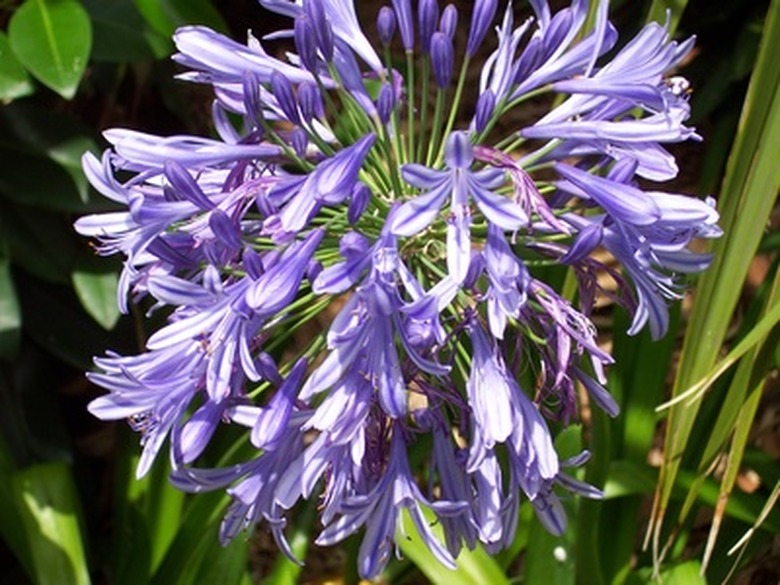How To Kill Agapanthus
Things Needed
- Spade
- String trimmer
- Glyphosate-based herbicide
The Agapanthus or Lily of the Nile (though it's not actually a lily nor from the Nile River region, according to the University of Wisconsin) hails from the African continent and is commonly grown as an edging plant or accent piece thanks to the brightly colored flower clusters that rise on long stalks. Though usually a desirable plant, gardeners may wish to kill it to make way for new vegetation. A combination of manual and chemical controls can quickly eradicate this perennial plant.
Step 1
Dig out the Agapanthus plant. This is ideal for killing a solitary Agapanthus, which forms single clumps. Slide a spade under the plant at an angle, loosening the soil around the clump until the entire plant can be lifted out of the ground. Lay the plant in the sun to quickly dry it out and kill it.
- The Agapanthus or Lily of the Nile (though it's not actually a lily nor from the Nile River region, according to the University of Wisconsin) hails from the African continent and is commonly grown as an edging plant or accent piece thanks to the brightly colored flower clusters that rise on long stalks.
- Slide a spade under the plant at an angle, loosening the soil around the clump until the entire plant can be lifted out of the ground.
Step 2
Mow the Agapanthus plant. This is best for entire beds of the plants. Use a string trimmer and cut the plants down to the ground. Repeat regularly to keep new foliage from growing. The plants' underground roots will starve without foliage and will die within several weeks.
Step 3
Spray the Agapanthus with glyphosate. The systemic chemical gets absorbed through the plant's foliage and kills the entire plant system. This approach is ideal for large amounts of Agapanthus that a gardener wants to kill quickly and with little physical labor. Wait for a day when rain isn't in the forecast. Mist the herbicide onto all exposed surfaces of the Agapanthus. It will die within 10 to 14 days.
- This is best for entire beds of the plants.
- Use a string trimmer and cut the plants down to the ground.
Tip
Replant the areas that once hosted the Agapanthus plants. Leaving the soil open and bare will increase the risks of a weed invasion.
Warning
Once they're established, Agapanthus are very hardy and drought-resistant, according to the University of Florida.
References
- "Agapanthus for Gardeners"; Hanneke van Dijk; 2004
